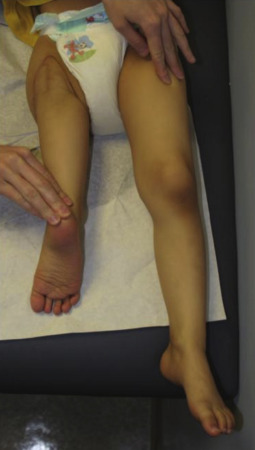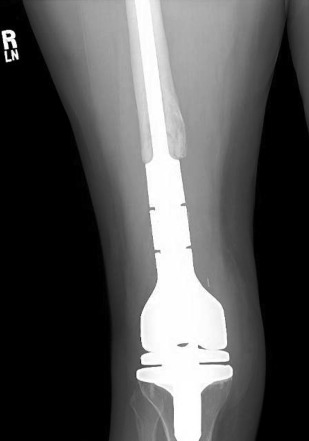Sarcomas are a relatively rare cancer that, depending on the location, can cause significant neuromusculoskeletal dysfunction and require rehabilitation interventions to reduce pain, restore function, and improve quality of life. This review focuses on sarcoma subtypes that frequently cause these complications: bony and soft tissue sarcomas leading to limb salvage or amputation, desmoid tumors, and malignant peripheral nerve sheath tumors. Rehabilitation approaches and outcomes are discussed, as well as considerations for childhood sarcoma survivors transitioning to adulthood.
Key points
- •
This familiarizes the reader with some of the sarcoma subtypes associated with loss of function, although nearly all sarcomas have deleterious potential in this regard.
- •
Outcomes of some of the treatment plans for lower extremity sarcoma are discussed at length; this gives an idea of the types of long-term management required, as well as what to expect from certain procedures (amputation vs limb salvage).
- •
Multidisciplinary approaches to rehabilitation is important, and with sarcoma it is not a “one-size-fits-all” approach due to the considerable variability in disease presentation.
Introduction
Sarcomas are tumors of mesenchymal cells that represent approximately 1% of all cancers. There are more than 70 different subtypes of this rare malignancy, each with different pathologic, molecular, and clinical features, and approximately 50% of people diagnosed with a sarcoma will die of the disease. Sarcomas may arise from tissues such as bone, muscle, nerve sheaths, cartilage, or fat, making their presence potentially disruptive to the neuromusculoskeletal system and patient function. For the purposes of this article, sarcoma subtypes most likely to be associated with functional impairment are discussed, although numerous other sarcoma subtypes may have an impact on function, depending on their location, how aggressive the tumor is, and oncologic treatment rendered.
Introduction
Sarcomas are tumors of mesenchymal cells that represent approximately 1% of all cancers. There are more than 70 different subtypes of this rare malignancy, each with different pathologic, molecular, and clinical features, and approximately 50% of people diagnosed with a sarcoma will die of the disease. Sarcomas may arise from tissues such as bone, muscle, nerve sheaths, cartilage, or fat, making their presence potentially disruptive to the neuromusculoskeletal system and patient function. For the purposes of this article, sarcoma subtypes most likely to be associated with functional impairment are discussed, although numerous other sarcoma subtypes may have an impact on function, depending on their location, how aggressive the tumor is, and oncologic treatment rendered.
Overview
Sarcomas may manifest in different areas of the body; soft tissue sarcomas are most often located in an extremity (45%), whereas sarcomas of the bone are more likely to manifest in the distal femur (osteosarcoma) or the pelvis/sacrum (Ewing sarcoma). The most common site of metastasis is the lung, where diffuse and/or large metastatic disease may cause complications like pneumothorax or decreased volume and therefore aerobic capacity. Oncologic treatment varies depending on subtype, but typically involves a combination of surgery, chemotherapy, and radiation. Many chemotherapeutic agents used to treat sarcoma, especially bony sarcomas, are associated with increased risk of chemotherapy-induced peripheral neuropathy, such as cisplatin, which is used for osteosarcoma, and vincristine, often used for Ewing sarcoma. Doxorubicin, an anthracycline chemotherapeutic agent commonly used to treat soft tissue and bony sarcomas, does not typically cause neuropathy but is cardiotoxic and thus may have deleterious long-term effects for survivors of the disease.
Like nearly all cancers, treatment for sarcoma is determined after discussion with a multidisciplinary tumor board, in which physiatrists can play an important role. Physiatric involvement in the multidisciplinary tumor board may help with surgical decision making (amputation vs limb salvage, for example) by predicting limb and overall functional outcome with each approach. Additionally, being a part of diagnostic and treatment-planning discussions familiarizes the physiatrist with the patient; this is especially important given the considerable variation in the clinical picture of each patient with sarcoma.
Lower extremity amputation, limb salvage, and rotationplasty
Sarcomas commonly affecting extremities include soft tissue sarcomas originating from skeletal muscle or fat, and bony sarcomas. Bony sarcomas are rare, but typically involve the lower extremity and include osteosarcoma and Ewing sarcoma. Chondromas require oncologic treatment similar to bony sarcomas and originate from cartilage. In the case of disease with few or no known metastases, local control with limb salvage or amputation is undertaken, each with advantages and disadvantages in terms of function and cosmesis, but with no significant differences in overall survival. The choice of amputation versus limb salvage can be a difficult one; limb salvage is often preferred for cosmetic reasons and patients may return to independent function earlier than those undergoing amputation. Patients who opt for amputation often do so if they wish to participate in higher-impact activities including sports; patients with lower extremity limb salvage cannot participate in activities involving repetitive or heavy weightbearing or endurance exercises, such as running, whereas someone with lower extremity limb loss may be able to participate in higher-level athletic endeavors with appropriate prosthetic restoration.
Despite activity restrictions, studies have shown a benefit in function with limb salvage versus amputation. An analysis of 118 patients followed for 1 year after either lower extremity limb salvage (57%) or amputation (43%) found that patients with limb salvage had higher physical function by 1 of the 2 measurement tools used, with a more proximal amputation and presence of pain predicting lower performance. Quality of life as measured by the Short Form-36, and employment status, were equal between the groups, as was one patient-reported measure of function. Another study looked at 91 adolescent and young adult patients after lower extremity sarcoma surgery, and found that patients with limb salvage again had higher Musculoskeletal Tumor Society rating scale (MSTS) scores, and that patients with rotationplasty had the overall highest function. Limb salvage has also been shown to be superior to amputation specifically with regard to stair climbing. Overall, limb salvage may provide a benefit in terms of everyday function, but patients who undergo amputation have similar quality of life and with prosthetic restoration have the potential to perform more physically intense activities, such as running. Given that many patients with sarcoma facing the option of limb salvage versus amputation are young and presumably in good physical shape, amputation may be preferable if a more active lifestyle is sought.
Patients undergoing limb salvage surgery may require multiple reconstructive surgeries or re-resections for local recurrence, whereas amputation is often definitive. With the advent of sophisticated external limb prostheses, patients may begin to opt for amputation more often in the future. Relative contraindications to limb salvage are tumor involvement of neurovascular structures, immature skeletal age, infection, difficulty of soft tissue reconstruction, inability to obtain sufficient tumor margins, and pathologic fracture.
Many patients requiring amputation undergo a transfemoral amputation due to disease involvement of the proximal tibia or knee joint. The residual limb may be irregular due to the tumor shape and associated bony changes, necessitating a custom rolling liner over the limb and flexible inner prosthetic liner to accommodate the shape and limb volume changes. Younger patients requiring a transfemoral amputation may opt for rotationplasty, a procedure that attaches the distal lower extremity to the femur, rotates the foot, and uses the ankle to essentially replace the knee ( Fig. 1 ). This provides a longer residual limb and functional joint, but is not common due to complications including de-rotation, abnormal cosmesis, challenges with prosthetic fitting, and future leg length discrepancy because the growth plates may remain intact. Despite this, long-term follow-up studies have shown good outcomes in patients after rotationplasty, with leg length discrepancy and degenerative changes in the residual limb’s foot contributing to lower performance.

After recording a thorough history of oncologic treatment to date, clinical evaluation of the patient with sarcoma with limb salvage or patient with sarcoma treated with amputation should include an assessment for skin breakdown, signs of neuropathic or phantom limb pain (potentially worsened by chemotherapy), and musculoskeletal pain and dysfunction that may arise from limb-length disparities and altered gait mechanics. Peripheral edema and decreased reported aerobic capacity may be signs of cardiotoxicity from anthracycline administration.
In addition to a complete history and physical examination, evaluation of patients after treatment for lower extremity sarcoma should consist of one or both of the MSTS and the Toronto Extremity Salvage Score (TESS) questionnaires. The MSTS looks at pain, function, and emotional acceptance for both upper and lower extremity amputees. It also evaluates hand positioning, dexterity, and lifting ability specifically for upper extremity patients, and the use of supports, ability to walk, and gait quality for lower extremity patients. The TESS is a patient-reported questionnaire asking 29 (upper extremity) or 30 (lower extremity) questions regarding everyday activities. The questions are scored 1 to 5, with 5 being the maximum. Both assessment tools measure function after surgery and should be considered as outcome measures for both clinical care and research.
Rehabilitation after limb salvage should emphasize restoration of range of motion, and strengthening muscles surrounding the resected area. Patients who undergo lower extremity limb salvage procedures are typically restricted from activities such as running and jumping, but are permitted to walk, swim, and do other low-impact activities. Typically, there are no specific limitations on activity duration. Gait is invariably altered in these patients, and one analysis of 20 patients with limb salvage treated for intra-articular knee sarcomas were found to have abnormally prolonged contraction of the quadriceps and hamstring muscles 1 year postoperative, even on the unaffected limb. For patients in whom bone must be resected, or who have a fracture and still undergo limb salvage, an endoprosthesis may implanted. These massive metallic prostheses, sometimes referred to as megaprostheses, may be customized to each patient and sometimes replace the entire femur ( Fig. 2 ). A megaprosthesis may be able to handle loads of up to 800 lb, but are at risk for structural failure and still limit function, especially if the surrounding tissue was radiated and fibrosis develops. One study found that regardless of the lower extremity endoprosthesis type, patients had difficulty performing tasks requiring knee flexion and had quadriceps atrophy and restricted range of motion at the knee. Outpatient rehabilitation emphasizing range of motion and strengthening, however, improves function after endoprosthethic reconstruction. Despite the complex nature of the procedure, limb salvage operations were found to be overall less expensive over the long term compared with amputation.










